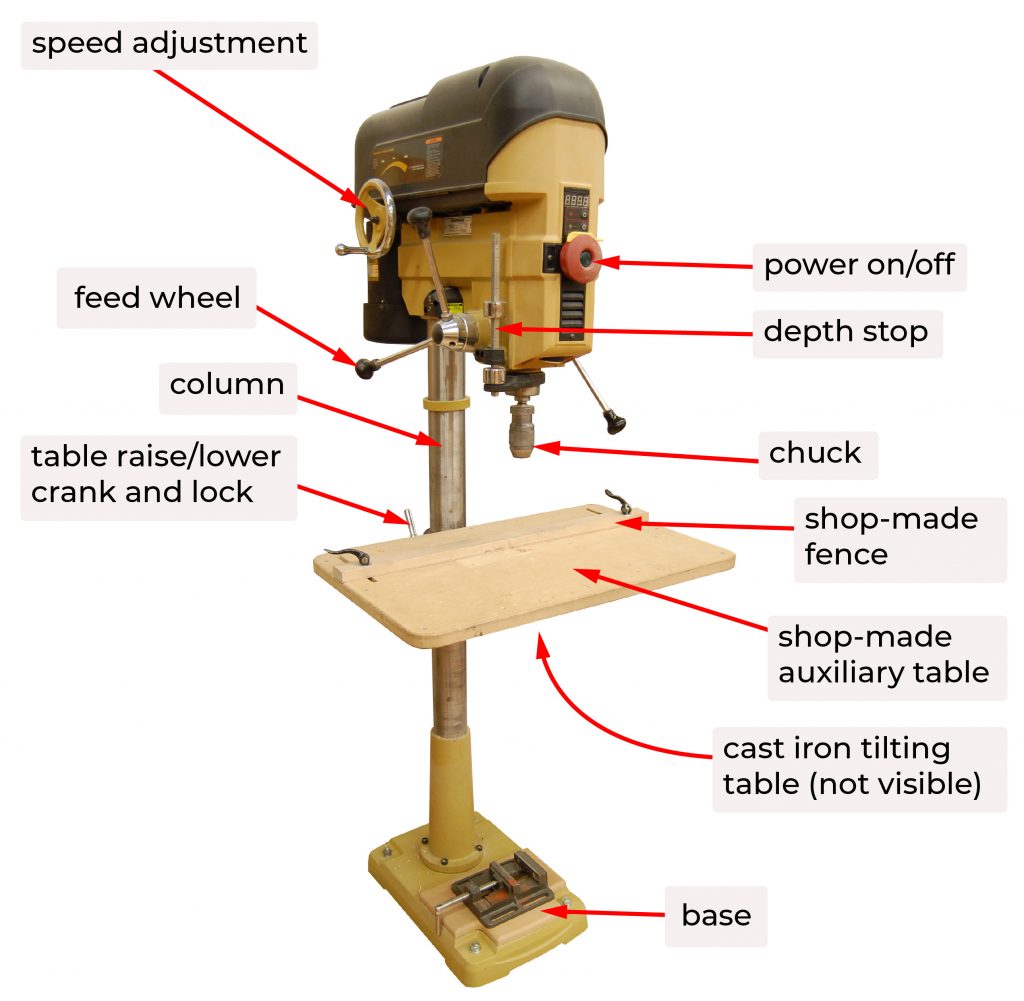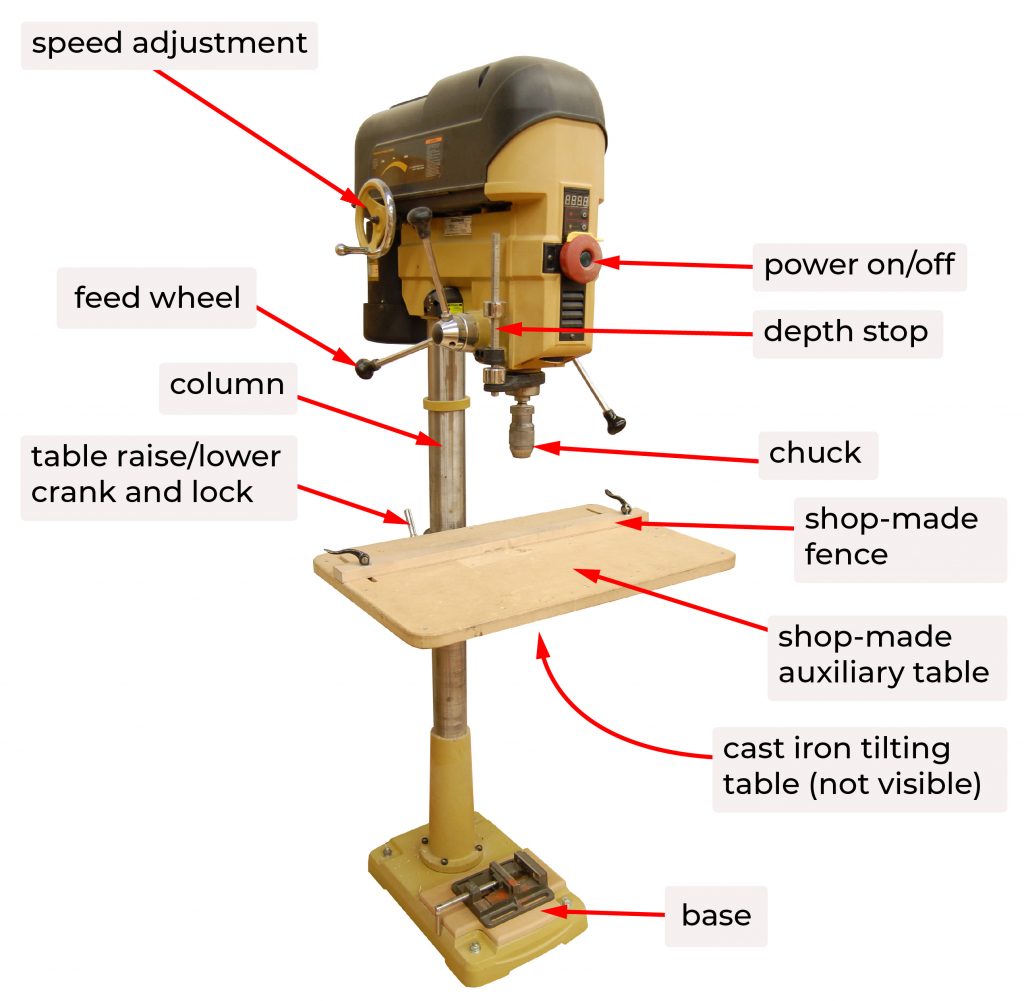Welcome, curious reader! Have you ever wondered what kind of motor powers a drill press? Well, you’re about to find out! In this article, we’ll explore the fascinating world of drill press motors and uncover the secrets behind their incredible power and performance.
When it comes to the heart of a drill press, the motor is where all the magic happens. It’s like the engine that drives this mighty tool, allowing it to effortlessly cut through various materials with ease. But what kind of motor does it take to make a drill press work its magic?
Get ready to dive into the world of motors as we discover the different types that can be found in drill presses. From powerful AC motors to efficient DC motors, we’ll explore the ins and outs of each and uncover which one is best suited for your drilling needs.
So, whether you’re a budding DIY enthusiast or just curious about the inner workings of a drill press, join us on this exciting adventure as we unravel the mystery of what kind of motor powers a drill press. Let’s get started!

What Kind of Motor Powers a Drill Press?
Drill presses are a common tool found in workshops, construction sites, and even home garages. They are used for drilling holes in various materials with precision and ease. One key component that drives the functionality of a drill press is the motor. But what kind of motor powers a drill press? In this article, we will explore the different types of motors commonly used in drill presses and their advantages and disadvantages.
Main Types of Motors
There are primarily two main types of motors used in drill presses: AC motors and DC motors.
AC Motors: Alternating Current (AC) motors are the most common type of motor found in drill presses. They are powered by the electrical current from the main power supply and convert it into rotary motion. AC motors are efficient, reliable, and capable of delivering consistent power for extended periods of time. They are also relatively affordable compared to other motor types. However, AC motors do not provide variable speed control, which can limit their versatility in certain drilling applications.
DC Motors: Direct Current (DC) motors are another common type of motor used in drill presses, especially in more advanced models. DC motors are powered by a direct current source, usually from a battery or power supply. These motors offer greater control over the drilling speed, allowing the user to adjust the rotational speed as needed. This makes them suitable for a wider range of materials and drilling techniques. However, DC motors tend to be more expensive and require additional maintenance, such as battery replacements or charging.
Benefits of AC Motors
AC motors, being the more common type of motor in drill presses, come with several benefits. Firstly, they are highly reliable and capable of delivering consistent power output, making them suitable for heavy-duty drilling tasks. AC motors also tend to have a longer lifespan compared to DC motors, reducing the need for frequent replacements. Additionally, AC motors are generally more affordable, making drill presses equipped with AC motors more accessible for beginners or those on a tight budget.
Furthermore, AC motors have the advantage of being compatible with standard electrical outlets, eliminating the need for additional batteries or power supplies. This convenience is especially beneficial in situations where continuous drilling is required without interruptions. The straightforward setup and operation of AC motors make them user-friendly, allowing even novice users to operate a drill press with ease.
Benefits of DC Motors
While DC motors may be pricier and require more maintenance, they offer distinct advantages for specific applications. One of the key benefits of DC motors is their variable speed control. By adjusting the power supply or battery output, users can easily control the rotational speed of the drill press. This versatility allows for precise and controlled drilling, particularly in delicate materials or when performing specialized drilling techniques.
Additionally, DC motors are often more compact and lightweight compared to AC motors, making drill presses equipped with DC motors more portable and easier to transport. This feature is particularly valuable for professionals who need to move their drill press frequently between job sites.
Another advantage of DC motors is that they are not affected by power fluctuations. Unlike AC motors, which may experience fluctuations in speed or power output due to variations in the electrical current, DC motors provide consistent performance regardless of the power source. This stability is crucial in situations where consistent torque and precision drilling are required.
Key Takeaways: What Kind of Motor Powers a Drill Press?
- A drill press is typically powered by an electric motor.
- Electric motors used in drill presses are usually induction motors.
- Induction motors are known for their durability and long lifespan.
- Different drill press models may have varying motor power ratings.
- The motor power determines the drilling capabilities and speed of the drill press.
Frequently Asked Questions
Here are some common questions about the type of motor that powers a drill press:
Can you explain the type of motor used in a drill press?
The motor used in a drill press is typically an induction motor. This type of motor is known for its durability and reliability. It uses electromagnetic induction to generate power, which allows for smooth and consistent operation. Induction motors are also designed to handle heavy workloads without overheating, making them ideal for powering a drill press.
In addition, many drill presses feature a variable speed control, which allows you to adjust the motor’s speed to suit different drilling applications. This can be particularly useful when working with different materials or using different drill bit sizes. Overall, the induction motor is a key component in a drill press, providing the power and performance needed for accurate drilling.
How does an induction motor in a drill press work?
An induction motor in a drill press works by using electromagnetism to generate rotational motion. Inside the motor, there are two main components: the stator and the rotor. The stator contains a series of copper coils, which create a rotating magnetic field when an alternating current passes through them. The rotor, which is attached to the drill press spindle, is made up of a series of laminated iron cores and conductive bars.
When the magnetic field from the stator interacts with the conductive bars on the rotor, it induces an electric current, resulting in a magnetic field in the rotor. These magnetic fields repel each other, causing the rotor to spin. As the rotor spins, it turns the drill bit, allowing for drilling operations. This process continues as long as the motor is powered, providing consistent and reliable drilling performance.
Are there different types of induction motors used in drill presses?
Yes, there are different types of induction motors used in drill presses. The most common types are single-phase and three-phase induction motors. Single-phase motors are typically used in smaller drill presses for light-duty applications. They are compact, affordable, and suitable for DIY projects or smaller workshops.
Three-phase induction motors, on the other hand, are more powerful and commonly found in larger drill presses used in industrial settings. They offer higher torque, better efficiency, and can handle heavier workloads. Three-phase motors require a specialized power supply and are commonly found in professional-grade drill presses.
What are the advantages of using an induction motor in a drill press?
There are several advantages to using an induction motor in a drill press. Firstly, induction motors are known for their durability and reliability. They are designed to operate for long periods without overheating, making them ideal for continuous drilling operations. Additionally, they require minimal maintenance, making them convenient to use.
Another advantage is that induction motors provide consistent and reliable power. This ensures accurate drilling results, especially when working with sensitive materials or precision drilling tasks. The variable speed control feature in many drill presses allows for further customization of the motor’s speed, providing versatility for different drilling applications. Overall, the use of an induction motor in a drill press ensures smooth, reliable, and precise drilling performance.
What should I consider when choosing a drill press based on the motor type?
When choosing a drill press based on the motor type, there are a few factors to consider. Firstly, consider the type of work you will be doing. If you plan to use the drill press for small DIY projects or light-duty tasks, a drill press with a single-phase induction motor should suffice. However, if you anticipate heavy-duty use or work in an industrial setting, a drill press with a three-phase induction motor would be more suitable.
Additionally, consider the power requirements and available power supply in your workshop. Three-phase motors often require a specialized power supply, so make sure you have the necessary electrical infrastructure in place. Finally, think about the level of precision and control you need. If you require adjustable speed options or precise drilling capabilities, look for a drill press that offers variable speed control and additional features that align with your specific needs.

Summary
So, you want to know what kind of motor powers a drill press? Well, it’s usually an electric motor! This motor helps the drill press spin and create holes in different materials. It’s important to choose a motor with enough power for the type of work you’ll be doing. And remember, always be safe when using a drill press!
In conclusion, a drill press is powered by an electric motor that allows it to spin and drill holes. Make sure to choose a motor with sufficient power for your needs, and always prioritize safety while using a drill press. Happy drilling!
